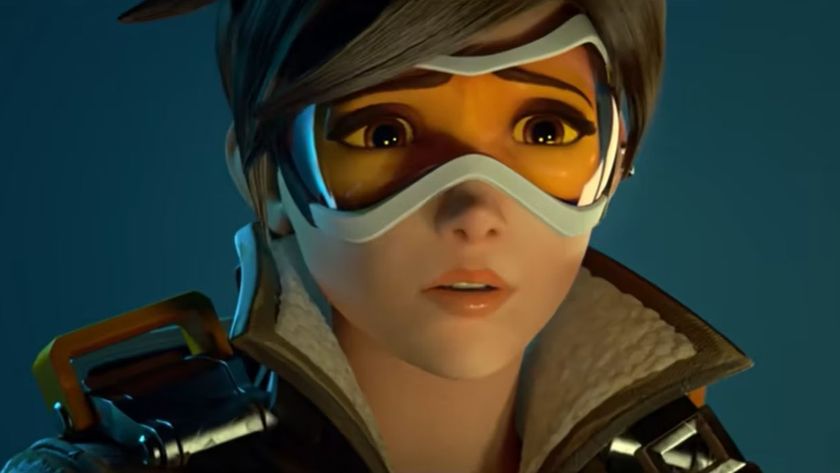"I climbed Mount Everest to learn the challenging truth of virtual reality"
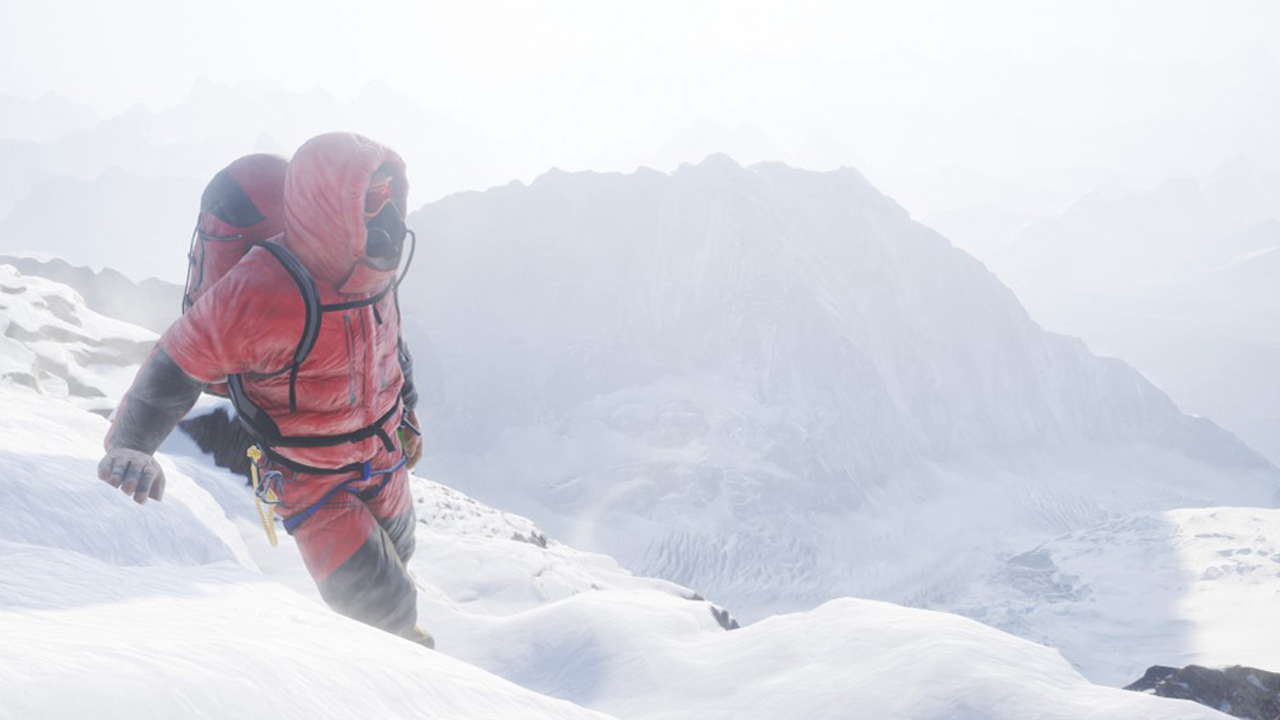
I’m standing at the summit of Mount Everest, the tallest peak on the planet. The flag I’m holding is flapping wildly in the stern breeze as I trudge forward and plant it squarely in the middle of a nice, fat lump of snow and ice. I take a moment to stop and survey the scene that only 4000 people in the history of humanity have ever witnessed. I watch as the sun sets slowly over the vast mountain range of the Himalayas and feel an immense sense of peace and achievement. I remove my headset.
Meanwhile, 5000 miles from here, my fellow GR+ team member Louise is staring at a very different scene. She’s in a porn movie. Ok, that sounds bad. She’s ‘experiencing’ a VR demo of the latest adult movie content by Naughty America. A few hundred meters from her, James Jarvis - our Video Lead - is soaring over Paris as a bird of prey in Ubisoft’s Eagle VR demo, and Leon - our News Editor - is screaming like a hysterical teenager as he’s chased around the Resident Evil 7 demo by a homicidal hillbilly.

Our experiences couldn’t be more different, but this is exactly why virtual reality is going to succeed where other faddy techs like 3D glasses and plastic peripherals have failed. VR doesn’t exist in a single, narrow sphere, nor does it limit itself to a single medium in which to grow. Yes, like most other successful technologies it has successfully romanced both the gaming and adult entertainment industries, but it’s also attracted interest from many other sources. Car manufacturers, medical research, travel providers… these are just some of the non-traditional sectors now looking to the potential of VR. And that matters.
“The feeling of scale that VR gives you really allows you to understand what you’re seeing,” explains Dr Richard Marks, who created PlayStation VR. “One example is that we did this work with NASA, and they made the Mars Rover in VR. It’s actually 7ft tall, but you never get that impression in pictures. However, when you see it in VR, you really get a feeling for what this 7ft tall Mars Rover looks like. You can stand next to it in VR, and until you do, you don’t really understand the size and scale of it.”
VR is another way of seeing things. Think about the name - it’s a virtual reality, and as such it allows everyone the chance to see (in theory) anything. This broad scope is something that should give this fledgling tech a great chance of survival, even with the steep, costly price of admission. However, much more than simply keeping headsets on heads for a few years, the fact that such a wide variety of people are working on VR is having a knock-on effect across the entire platform. Actually, that’s under-selling it - it’s changing the way people think about tech. In other words, the advances in one aspect of VR spread elsewhere. So, when someone in the adult entertainment industry makes a discovery about how to make you feel less nauseous during a three-way, it could vastly improve the scares in next Resident Evil. Or the way a car company designs its heads-up display.
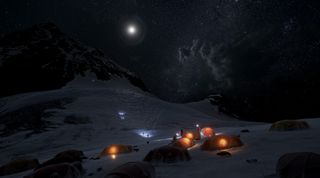
The problem some video game technologies have faced in the past is that they’ve innovated and designed purely within the medium they were created for. This can make the technology feel very underwhelming, quite niche, and leave it quickly forgotten when ‘the next hotness’ appears. Because VR is being researched and created by such a wide array of industries, it should have a much more positive, creative impact on traditional games. People who aren’t traditionally involved with video games inevitably have a different approach to solving problems and innovating than those who are. This can only be good for games, because it’ll mean we find new ways to play and solve some of the traditional issues involved in making interactive experiences, just by looking at how smart people in other industries do it.
Let’s go back to my Everest demo for a simple example of how this has already happened. “Everybody is talking about the elephant in the room, which is motion sickness, but for us it’s just... kill the elephant!” explains Reynir Hardarson, Creative Director of Solfar Studio’s Everest experience. “When we were starting [the Everest demo] 15-20% of people were telling us that they were sick. So we worked out that when you climb upwards, you’re perfectly fine. But you cannot do the same thing and move yourself forwards – that makes you sick. Why? We have no idea. But it’s just one of these things – I’d guess you sense lateral motion differently from horizontal. There are a lot of small things like this which you just learn through development, and it’s very exciting to be in an industry at a time when people are just learning all these things in their experiences, etc.”
Sign up to the 12DOVE Newsletter
Weekly digests, tales from the communities you love, and more
Because developing in VR is completely new to everyone, it’s tricks like this that will have a ripple effect for other experiences. Later in my interview Hardarson reveals that the Solfar team quickly discovered that an individual’s perception of a 3D space is best for the first five minutes of immersion, and after that it starts to degrade. As such, the Everest demo itself is split into smaller chunks - wandering around basecamp 4, Hillary’s Step, the summit itself - all small parts of the whole experience, offering very different types of activities. This is certainly something that’ll be a problem for traditional video games, which are largely designed to be played for much longer sessions. Similarly, movies demand that we sit in a single space for between 90 minutes and three hours.
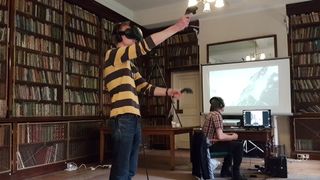
How this is resolved will likely be a two-stage process. Software developers will need to be smarter with how they use VR, making it more palatable for our brains. On the other side, hardware creators will need to make the actual headsets lighter, more wearable, and more integrated into our everyday lives. A combination of the two will allow us to spend more time, more comfortably inside another world. How long will that take? “If you’re trying to make something that people can use all the time, wear it every day (and out in public), sure then you kind of have to change what fashion is,” explains Palmer Luckey, founder of Oculus. “You have to make VR 'fashionable' for people to want to wear it, and that isn’t going to happen in the near term.”
The initial wave of VR devices are just the very, very basic beginning for this tech. Virtual reality headsets will get smaller, smarter, cheaper. And the realities - the worlds themselves - will get much, much more believable too. The Everest demo is a particularly interesting case when it comes to the evolution of thinking around VR. There’s a section I experience where you shimmy along a very narrow ledge, with a vast drop on one side and a large snow-drift on the other. While I’m playing I feel a sense of vertigo, my palms sweat, and I’m scared of falling off. I assume that’s because I’m treating the Everest demo too seriously, so I ask Hardarson what happens when you do actually fall off… His answer is surprising.
“Nobody steps off the ledge – nobody walks into thin air,” he says. “You can do it and walk into thin air, and we were thinking and planning to make you fall but we decided against it. We may add it later, but during the testing nobody does it, so it’s a non-issue. It’s so weird, you just feel it.” Similarly, he tells me about moments where other people have played the demo and actually panicked at what they were experiencing. During a section where you cross a crevasse on a ladder, many people got so scared they ran and ended up slamming into the wall of the demo area. It’s the fight or flight response, and the Everest demo is powerful enough to trigger it. That’s the level of realism we’re already at.
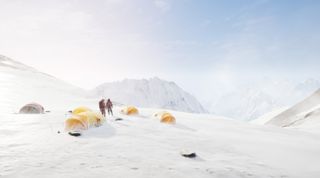
The reason is that this demo was built from the same assets used to create the movie Everest, as Hardarson explains: “The idea came really when RBX was working on the movie. We were old friends and had plans to do a collaboration on something, and we saw what they were doing with the movie, and we didn’t know at the time that they had actually created Mount Everest in 3D.”
He continues: “They had done it to a level of detail that we had never seen, and didn’t think was possible, but they had only created the mountain in low resolution. So we decided to take it and remake the whole thing in high resolution, because that’s what you need for VR. Why? Because it’s not going to be confined to specific shots like in the movie. So we repurposed it using the same methods and the same photographs and stuff like that.”
In theory, then, anywhere can be recreated in photorealistic detail, providing you can get a camera to take a few thousand photographs. And given the advances in drone technology, that means… pretty much anywhere on the planet and beyond. VR will eventually enable us to see and interact with any of our world’s natural wonders, which puts complaints about ‘costing too much’ and ‘making us look like a bit of a fool’ in perspective. And that’s before game designers start to gamify these spaces, or push further into fantasy realms as the tech begins to catch up with their imaginations.
Head of PlayStation VR, Shuhei Yoshida, is certainly looking to the future when it comes to VR’s exploration potential. “For me - I really like travel. I’m getting old, I’m 51 years old - I’m feeling my body getting older. So I want a full VR system for when I get older and I can’t physically travel around. So, for me, I’m working hard for my old age!”
Even Yoshida himself, who has dedicated a large portion of his life to making games, is excited about the wider possibilities of VR. While the tech is heavily associated with gaming, simply thinking of it as ‘just another peripheral’ or ‘another way to play’ is massively underestimating its potential and scope. VR will change video games, for sure, but it’ll succeed in its own right by offering experiences that go way beyond traditional games or any other kind of entertainment, because it has the attention of the whole world. And whether that means you end up at the summit of the highest peak on earth, or in the most sordid erotic encounter you could imagine, the choice will inevitably be yours. And THAT is the true beauty of VR.
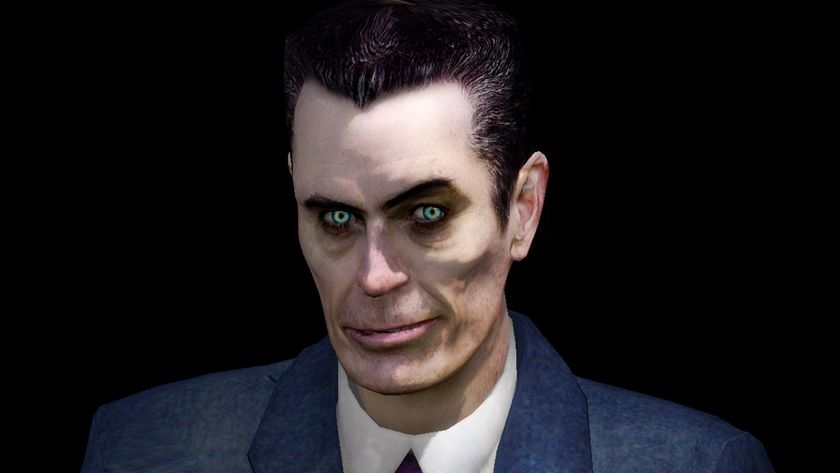
Valve leads considered making a "mediocre" game before Half-Life to build the team up, but original marketing exec said "if you do that, the company will fail"

Take-Two won't begin marketing GTA 6 until it's closer to release: "The anticipation for this title may be the greatest anticipation I've ever seen for any entertainment property"

